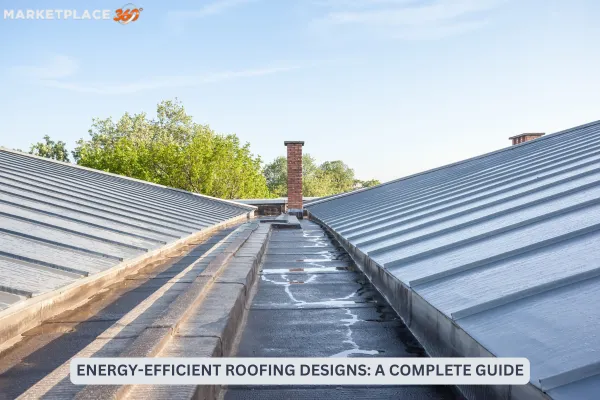
Energy-Efficient Roofing Designs: A Complete Guide
Energy-Efficient Roofing Designs: A Complete Guide
Energy efficiency is a growing priority in the construction industry, and roofing plays a pivotal role in achieving this goal. Energy-efficient roofing designs are engineered to reduce energy consumption, improve indoor comfort, and lower utility bills, making them a win-win for homeowners and businesses alike. This blog explores the principles, materials, and benefits of energy-efficient roofing designs, as well as the latest trends shaping the industry.
What Is Energy-Efficient Roofing?
Energy-efficient roofing minimizes heat transfer between a building and its environment, reducing the need for artificial heating or cooling. These roofs are designed to reflect solar radiation, enhance insulation, and integrate sustainable materials and technologies for long-term performance.
Components of Energy-Efficient Roofing Designs
1. Reflective Roof Coatings
Reflective coatings are applied to roofing materials to bounce sunlight away from the surface. These "cool roofs" reduce heat absorption, particularly in warm climates, and help maintain lower indoor temperatures.
2. Insulated Roof Decks
High-quality insulation prevents heat loss in winter and reduces heat gain in summer, ensuring year-round energy efficiency. Insulated decks are critical for both residential and commercial buildings.
3. Ventilation Systems
Proper ventilation in roofing prevents heat buildup in attics, improving energy efficiency and prolonging the roof’s lifespan. Ridge vents, soffit vents, and fans are common solutions.
4. Solar Roofing
Solar panels or solar shingles convert sunlight into electricity, reducing reliance on non-renewable energy sources. They also offer substantial energy savings for homeowners over time.
5. Green Roofing Systems
Green roofs, covered in vegetation, provide natural insulation, absorb heat, and reduce the urban heat island effect. They are particularly effective in densely populated areas.
Benefits of Energy-Efficient Roofing Designs
Cost Savings
By reducing the need for heating and cooling, energy-efficient roofs lead to lower utility bills over the roof’s lifespan.
Environmental Impact
Energy-efficient roofing reduces greenhouse gas emissions and contributes to sustainability goals by lowering energy consumption.
Enhanced Comfort
Improved insulation and reflective surfaces maintain a more consistent indoor temperature, enhancing occupant comfort.
Increased Property Value
Energy-efficient features, including roofing, often boost property resale value by appealing to eco-conscious buyers.
Challenges in Adopting Energy-Efficient Designs
While energy-efficient roofs offer significant benefits, there are some challenges to consider:
Upfront Costs: Advanced materials and technologies can be more expensive initially.
Installation Expertise: Proper installation of energy-efficient designs requires skilled professionals.
Regional Suitability: Some features, such as reflective coatings, are more effective in specific climates.
Future Trends in Energy-Efficient Roofing
Building-Integrated Photovoltaics (BIPV): These systems seamlessly incorporate solar panels into the roof’s design for enhanced aesthetics and energy generation.
Advanced Insulation Materials: New materials, such as aerogels, offer superior insulation without adding bulk to the roof structure.
Dynamic Roofing Systems: Innovations like color-changing roofs adapt to weather conditions for optimal energy efficiency.
Conclusion
Energy-efficient roofing designs are more than a trend—they are an investment in sustainability, cost savings, and enhanced building performance. Whether you're constructing a new home or upgrading an existing one, these designs offer long-term benefits that align with environmental and financial goals.





